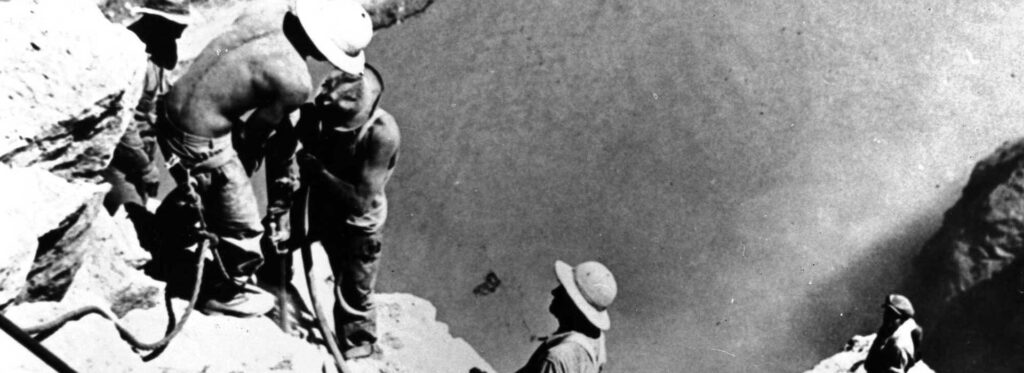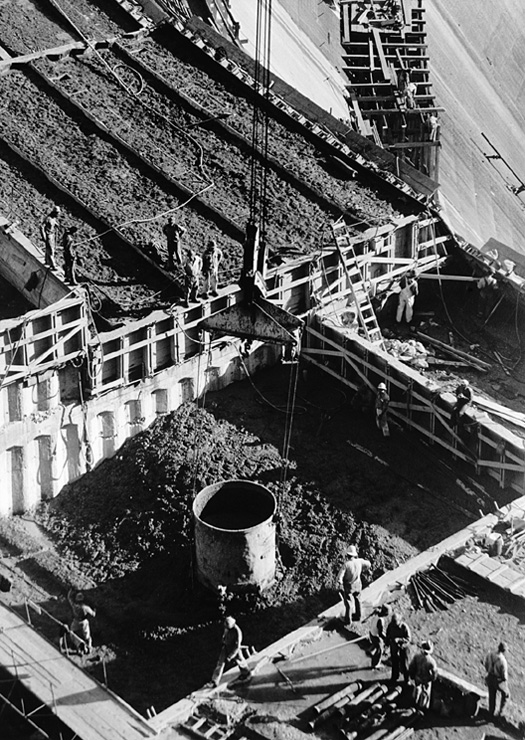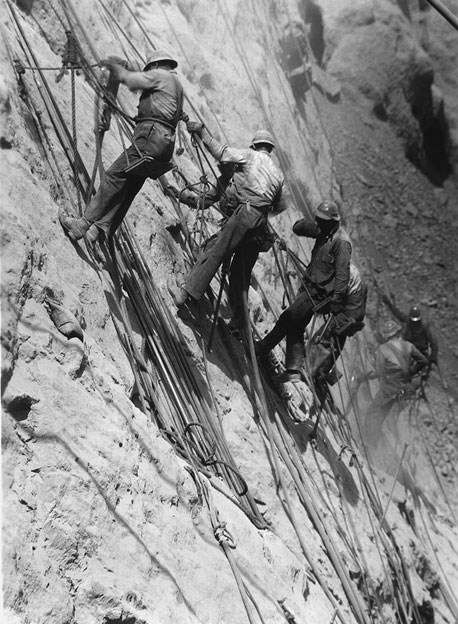Get in touch with us for the best quality continuing education materials
Customer satisfaction and providing high quality content is our highest priority. Please let us know how we can improve your experience in any way.


1) How many people died building the dam?; and
2) How many of those are buried in the concrete? The second question may be the easiest for a professional engineer to deduce.
The area of the blocks ranged from about 25 feet front to back by (25 to 60 feet) wide. Workers delivered concrete to each block in buckets, eight cubic yards at a time. Next, five or six men called “Puddlers” would stamp and vibrate the concrete into place. Each emptied bucket would raise the wet concrete 2 to 6 inches. With the slight increase in the level at any one time, and the presence of several puddlers, it would have been nearly impossible for anyone to be buried in the concrete. So if they followed engineering practices or even work standards at the time, then the curious PE can deduce that there are no bodies buried in Hoover Dam.

The question regarding total number of fatalities is more difficult to answer, because it depends on who is included as having “died on the project”. Timing and geographic factors of what is considered the start, finish and location of the project may also blur fatality calculations. Most sources cite the number of deaths between 96 to 112. The high figure includes fatalities from 1922, which makes Bureau of Reclamation employees J.G. Tierney and Harold Connelly the first fatalities at the site. They were conducting a geological survey from a barge, fell into the Colorado River, and drowned. That was 8 years before construction officially began, but it was at the site of the dam. So, the defined timeframe variant directly varies the total number of deaths.
Some references include in the fatalities of those who died from non-construction related causes of residents of Boulder City (approximate population 5,000 men, women and children). Whatever the “official” number is, the men who died at the dam site were (classified as “industrial fatalities”) from causes such as drowning, blasting, falling rocks or slides, falls from the canyon walls, being struck by heavy equipment, truck accidents, etc. Industrial fatalities do not include deaths from heat, pneumonia, heart trouble, etc.
In addition to the dam itself, construction included several unprecedented logistical projects. The dam site was in a desolate area of desert on the Nevada/Arizona border with no existing infrastructure. Summer temperatures reached 120 degrees F and winter temperatures dipped below freezing. A city to house over 5,000 workers, railroads, roads, workers shuttle vehicles, electric power supply, pedestrian bridges and cable trolleys were some infrastructure requiring expedited construction to prepare the site. To begin construction of the dam, an earthen diversion dam, a coffer dam at the downstream side of the dam, rock scaling, and a short railroad in the canyon floor were some of the tasks to be completed. By far, the most dangerous job was that of the rock scalers. Their hazards included falling, being struct by falling objects, and handling explosives.
Today, a higher priority is placed on safety. For perspective, most of the work on the dam was done from 1931 to 1935 in the depths of the Great Depression. People had first-hand experience of the depression personal hardships. Naturally, survival needs for employment affected a workplace cultural tolerance for risk of workers and companies. A worker facing the prospect of his family going hungry would take more risks to his personal safety on the job. Society at that time was also more willing to pay the price in human life lost to accidents than generations living in more prosperous times. Usually, the only say a worker had in his situation was to choose if he would take the job or not. The companies building the dam were subject to stiff penalties by the government agencies for each day of any missed deadline.
Even though individuals and society in the 1930’s were willing to take higher risks than would be considered today, attitudes had begun to change. In the late 1920’s workers and industry were adapting, improvising and improving safety equipment and methods. Contractors and engineers designed their shoring systems for safer excavations. The rock scalers at Hoover dam were among the pioneers of the use of hard hats in construction. The trend, perhaps slow moving, was shifting toward improved safety for construction and industry. Safety methods were mostly locally improvised and optional. One of the earliest national safety standards was developed by the US Bureau of Mines (USBOM) shortly after World War I on the use of respirators. While the USBOM’s primary purpose was research on extraction methods, conservation and safety were also within their auspices. State and Federal standards evolved from the USBOM with OSHA, MSHA and other agencies being created in the early 1970’s.
When counting accidents at the physical site, Bureau of Reclamation employees J.G. Tierney and Harold Connelly were the first fatalities. Thirteen years later, to the day, Patrick W. Tierney, J.G.’s son, fell from the intake tower and drowned, making Patrick’s the last fatal accident related to construction of Hoover Dam.

The rock scalers at Hoover Dam were part of the improvised safety movement. They made their own hard hats and adapted helmets from the mining industry. Six Companies, in an effort to improve the high accident rate of the scalers, mandated in 1931 that hard hats be worn by all rock scalers and “any scaler caught working without a hard hat or showboating will be terminated”. This is the first known required use of hard hats in US construction. Two years later, the Golden Gate Bridge project adopted a similar hard had mandate.
Construction will continue to advance which present new safety challenges. Who knows what is ahead. Perhaps advancements like the use of robots and remote-control equipment, or improved monitoring equipment or application of improved safety procedures will be part of the advancement of work place safety. As engineers, look forward to being part of the solution.
Safety First Monthly Features for PE’s.
Some Rock Scalers (High Scalers) at Hoover Dam made their own hard hats by molding layers of fabric bonded with a hard grade of bitumen (tar). Some others used mining helmets.
Customer satisfaction and providing high quality content is our highest priority. Please let us know how we can improve your experience in any way.